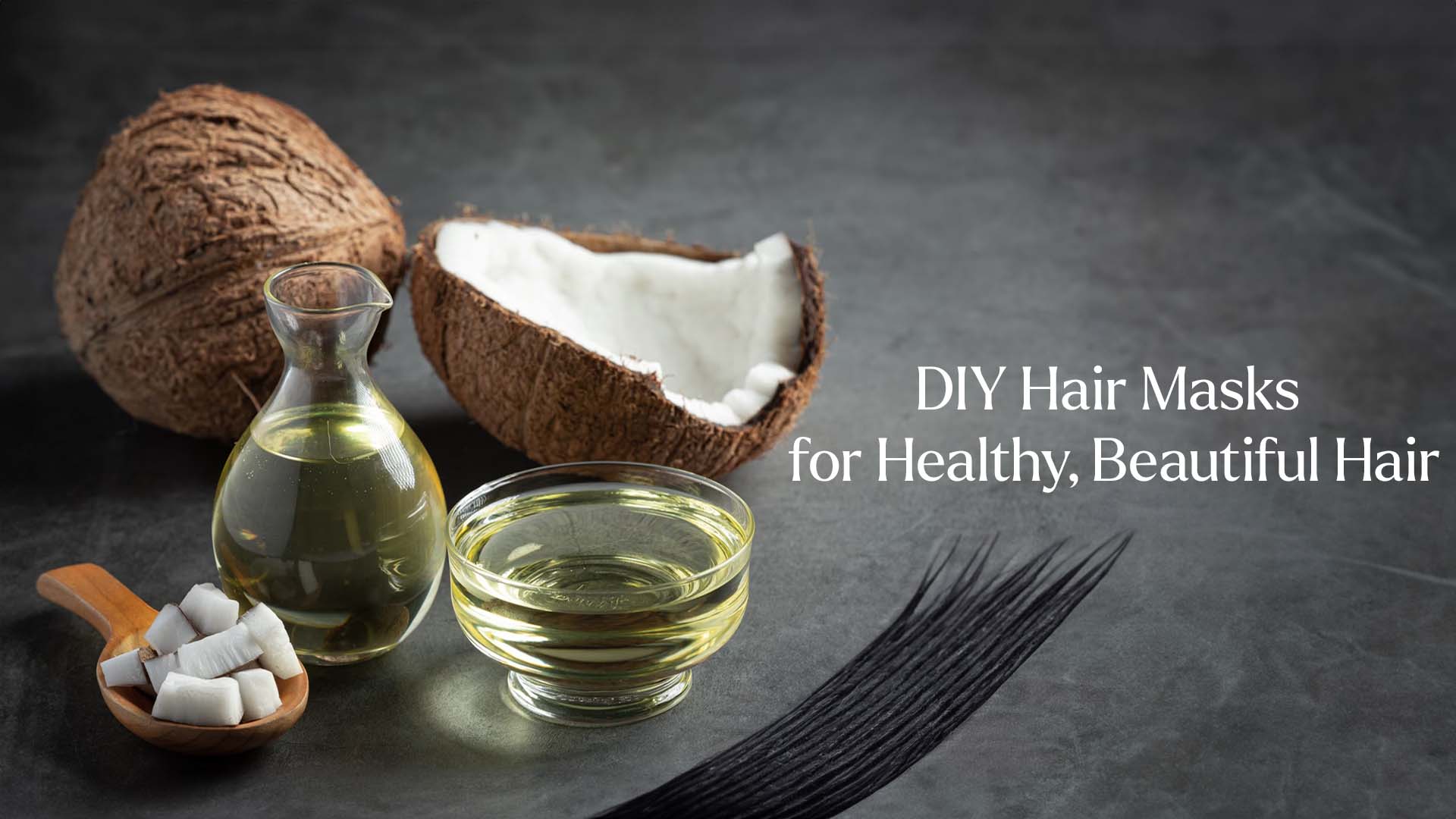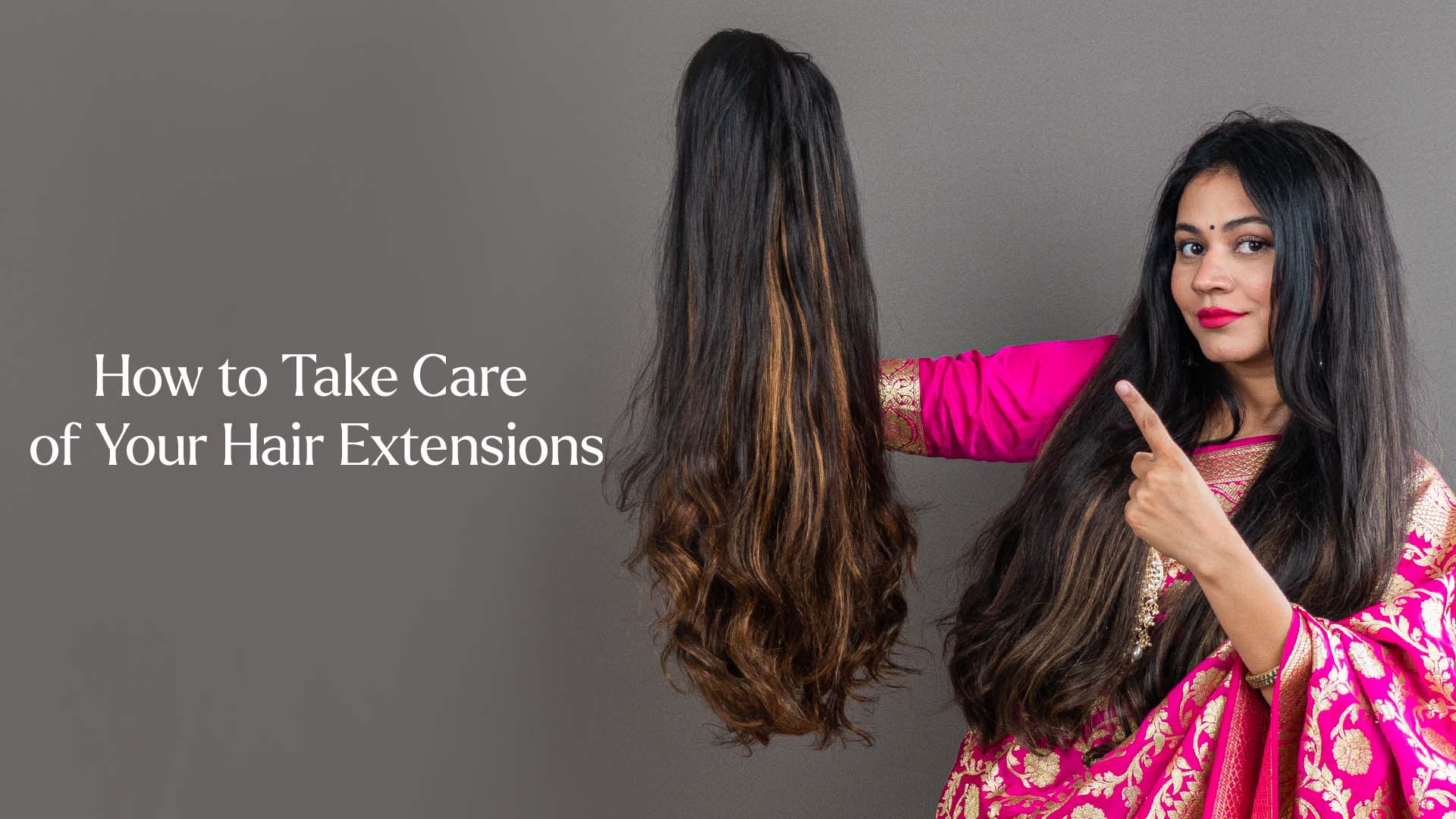Hair extensions have become increasingly popular in recent years as a means to enhance one's appearance and experiment with different hairstyles. Whether you're looking to add length, volume, or even a touch of color to your hair, hair extensions offer a versatile solution.
Just like hair wigs, extension hair could be temporary or permanent and of many different types too. They are also used to cover up bald scalp patches, thinning hair and other problems. In this comprehensive guide, we will delve into the world of hair extensions, covering everything from types and application methods to maintenance and styling tips.
By the end, you'll have a solid understanding of hair extensions, empowering you to make informed decisions about incorporating them into your beauty routine easily. Let's go!
Table of Contents:
1. Types of Hair Extensions: Clip-In Extensions, Tape-In Extensions, Sew-In/Weave Extensions, Fusion/Keratin Bond Extensions, Micro Link Extensions, Halo Extensions
2. Application Methods
- Professional Installation
- DIY Application
3. Choosing the Right Hair Extensions
- Hair Texture and Type
- Hair Extension Length
- Hair Extension Color
4. Maintenance and Care: Washing and Conditioning, Brushing and Styling, Protecting Hair Extensions during Sleep and Exercise, Regular Maintenance Appointments, Storage of extensions
5. Styling Options with Hair Extensions: Straight Hairstyles, Curly and Wavy Hairstyles, Up-dos and Ponytails, Adding Highlights and Ombre Effects
6. Hair Extension Myths and Facts: Hair Extension Damage, Hair Extension Lifespan, Hair Extension Compatibility
7. Removing Hair Extensions: Professional Removal, DIY Removal, Choice of method
8. Cost Considerations: Initial Investment, Long-term Expenses
9. Hair Extensions and Ethnic Hair Types: Matching Hair Textures, Special Considerations
10. Conclusion
Types of Hair Extensions
Hair extensions come in various types, each with its own unique advantages. The most popular types include: clip-in extensions, tape-in extensions, sew-in/weave extensions, fusion/keratin bond extensions, micro link extensions, halo extensions etc.
- Clip-in extensions are the easiest to use and can be applied and removed at home. It is just like using clips with your hair.
- Tape-in extensions involve attaching wefts of hair to your natural hair using adhesive tape. This is a more secure but a little complicated method.
- Sew-in/weave extensions are sewn into braided tracks or a net. This one is a permanent solution and cannot be reversed easily. Although, the extensions remain intact for a long time on the scalp.
- Fusion/keratin bond extensions use heat to bond individual strands to your natural hair. This is a complex yet useful method.
- Micro link extensions attach hair using small metal rings. This gives the appearance of micro hair that is very dense and voluminous.
- Halo extensions are a temporary solution that sits on top of your head, providing instant length and volume. This method is temporary but looks very beautiful.
Application Methods
Hair extensions can be applied professionally or through DIY methods. Let us look at each of these briefly:
- Professional installation ensures precise placement and reduces the risk of damage. Trained stylists use specific techniques for each type of extension.
- However, if you're experienced and confident, you can apply clip-in extensions or tape-in extensions yourself. DIY application requires careful sectioning and placement to achieve a natural look.
Also, this decision depends on the user as well as the type of extension used by them. Some temporary hair extensions are easy to use on our own while others can only be done using a professional help. Choose a method that fits you perfectly.
Choosing the Right Hair Extensions
Selecting the right hair extensions involves considering factors such as hair texture, type, length, and color. It also depends on the problem or requirement of your hair. Whether you need the extensions for a more permanent look or just for a little more length. For a seamless blend, match the extensions to your natural hair as closely as possible. Consider the texture, whether straight, wavy, or curly.
Choose between human hair and synthetic hair, keeping in mind that human hair offers more versatility and a more natural look but is also somewhat expensive. Additionally, ensure the length of the extensions complements your desired hairstyle. Lastly, select a color that matches your hair perfectly or opt for contrasting shades to achieve a bold look.
Maintenance and Care
To maintain the quality and longevity of your hair extensions, proper care is essential. Follow specific guidelines provided by your stylist or the manufacturer.
- Regularly wash and condition the extensions with sulphate-free products. Try to avoid using any hard chemical products with the extensions.
- Avoid excessive brushing and use a wide-toothed comb or a brush specifically designed for extensions. Start detangling from the ends and then work your way upwards.
- When sleeping or exercising, tie your hair in a loose braid or ponytail to minimize tangling. You can also use a satin pillow cover to sleep to prevent frizz (in case of permanent hair extensions).
- Schedule regular maintenance appointments to ensure the extensions stay secure and well-maintained.
- Store them in a good hygienic place away from moisture and bacteria.
Styling Options with Hair Extensions
Hair extensions offer endless styling possibilities. With added length and volume, you can experiment with various hairstyles, from sleek and straight to curly and wavy. Updos and ponytails become more voluminous and elaborate with extensions.
If you want to add highlights or ombre effects without coloring your natural hair, extensions provide a temporary and damage-free solution. Heat styling tools can be used on most extensions, but it's crucial to protect them with heat protectant sprays to prevent damage.
Hair Extension Myths and Facts
There are several misconceptions surrounding hair extensions. Contrary to popular belief, when applied and maintained correctly, hair extensions do not cause significant damage to your natural hair. The lifespan of hair extensions varies depending on the type and quality but can be extended with proper care and maintenance.
Additionally, hair extensions can be compatible with most hair types, with a range of options available to suit diverse needs. Also, if you choose a good hair extension with top quality, it will look good and also last long. Hair extensions are also super affordable and really good for solving many hair problems. You can check out some top quality hair extensions at Gemeria!
Removing Hair Extensions
When it comes time to remove your hair extensions, professional removal is the safest option. Trained stylists use specialized tools and techniques to ensure the extensions are detached without causing damage to your natural hair. However, if you choose to remove them yourself, proceed with caution and follow detailed instructions to avoid any mishaps.
For permanent extensions, using professional help is the best since these extensions are usually non reversible to use. Temporary hair extensions are comparatively easier to use and remove, especially the clip-in hair extensions or tape-in hair extensions.
It all depends on what you want and prefer. It is very easy to attach and detach a hair extension though. Only depends on the type of extension and your personal choice.
Cost Considerations
The cost of hair extensions varies depending on factors such as the type, quality, length, and application method. While the initial investment may be higher, the long-term expenses can be minimized with proper care and maintenance.
Budget-friendly options are available, but it's important to strike a balance between quality and affordability to ensure satisfactory results. Like the hair extensions here at Gemeria: the perfect blend of quality and affordability.
Human hair extensions are comparatively a little costly due to their good quality and texture. They are the most similar to your natural hair and almost impossible to distinguish.
Hair Extensions and Ethnic Hair Types
When considering hair extensions for ethnic hair types, it's crucial to match the hair texture to achieve a seamless blend. Different hair types require specific types of extensions and application methods to ensure the best results. Consulting with a professional stylist who specializes in ethnic hair can provide tailored recommendations and ensure a natural and beautiful outcome.
Even we at Gemeria offer a variety of hair extensions to match all hair types and requirements. So it's never a problem for any hair type to find a suitable extension for their hair.
Conclusion
Hair extensions offer a versatile way to transform your hair, providing length, volume, and creative styling options. By understanding the various types, application methods, maintenance tips, and styling possibilities, you can confidently incorporate hair extensions into your beauty routine.
Remember to choose high-quality extensions, follow proper care instructions, and seek professional assistance when needed. With the right approach, hair extensions can be a game-changer in achieving your desired hair goals.
Extensions are used for a variety of purposes and it all depends on your requirements. You can easily use an extension based on your choice too.
At Gemeria, we take pride in offering the best and the most affordable hair extensions and wigs. You can check out all our products on our website!



